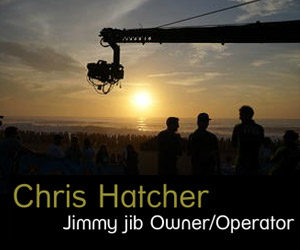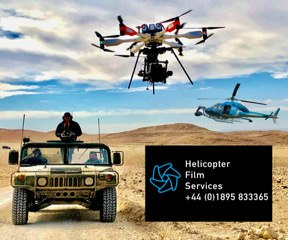Broadcast News
21/01/2016
Broadcast Systems Integration Trends

Some decades ago, the opinion was expressed by an industry veteran that television broadcasters should climb the ladder up to higher technical standards as quickly as possible because they had the computer business snapping at their feet, says by Russell Peirson-Hagger, Managing Director, ATG Danmon UK.
But it ignored the reality that the computer industry embraces new technology so quickly that the word 'standards' seems almost irrelevant. The computer world is essentially resolution independent, upscaling or downscaling to whatever display format is most appropriate to the host device. The broadcast industry is heading in the same direction with SD, HD and UHD co-existing on a wide range of devices.
SD images transcode very nicely up to UHD when viewed from a respectable distance. HD images transcode to UHD even better. And UHD source material can look breathtaking when viewed close up. So who is pushing for higher standards and why? It certainly isn't the systems integrators; our role is to deliver what the customer needs in today's marketplace while leaving the door open to add new facilities or new channels in line with future demand.
The push for higher standards comes from relentless advances in electronics. With every passing year, components can be made smaller, faster and (provided the market is large enough) cheaper. This leads in turn to improved cameras, faster signal processors, greater memory capacity and improved displays. We are already working in the UHD domain, for a client who recognises that shooting in UHD is a sure way to prolong the commercial life of new productions. NHK has long advocated pushing the UHD boundary out to 3840 x 2160 pixels. This has become the next production target for consumer display manufacturers with their eyes firmly focused on the 2020 Tokyo Olympics.
Meanwhile the push is on for higher dynamic range. Latest generation OLED screens achieve subjectively greater visual dynamic range than the majority of LED-backlit LCDs. The reason is simply that each pixel in an OLED generates its own light rather acting as a filter for light coming from behind it. The result is greatly improved handling of dark areas. Since OLEDs can also generate impressively bright images, the perceived picture quality can be breathtaking. There are still standards issues to be settled in relation to video dynamic range, complicated by the variety of methods available for transcoding and screen refreshing.
The move from panel-per-product hardware to software-based solutions running on enterprise servers has now become an established fact of systems integration life. Technology has progressed to the point where multiple devices can be virtualised within a single server. The key technical challenge today is to ensure that software from multiple vendors operates efficiently when combined into a single operating environment, whilst retaining the flexibility and reliability that broadcasters quite rightly insist on.
There was a lot of discussion at the trade shows in 2014 and 2015 about the relative merits of SDI and IP. IP clearly has some benefits on offer but there are still plenty of reasons why we will see the continued use of SDI for the foreseeable future. Rather than IP completely replacing SDI, it is evident that a hybrid approach currently offers the best of both technologies.
Traditional broadcasting has proved its ability not just to survive competition from the computer industry but to embrace it. Many channels now offer catch-up television services as a routine element of their activity, along with web-based news, programme guides and over-the-top supplementary programme feeds. A key element of our role as a systems integrator is to support our customers with these new delivery options and to ensure they can operate as efficiently as possible in an industry which demands high productivity as well as creativity.
Image: Input Media's Director of Technology Nick Symes.
www.atgdanmon.co.uk
This article is also available to read at BFV online.
(JP/LM)
But it ignored the reality that the computer industry embraces new technology so quickly that the word 'standards' seems almost irrelevant. The computer world is essentially resolution independent, upscaling or downscaling to whatever display format is most appropriate to the host device. The broadcast industry is heading in the same direction with SD, HD and UHD co-existing on a wide range of devices.
SD images transcode very nicely up to UHD when viewed from a respectable distance. HD images transcode to UHD even better. And UHD source material can look breathtaking when viewed close up. So who is pushing for higher standards and why? It certainly isn't the systems integrators; our role is to deliver what the customer needs in today's marketplace while leaving the door open to add new facilities or new channels in line with future demand.
The push for higher standards comes from relentless advances in electronics. With every passing year, components can be made smaller, faster and (provided the market is large enough) cheaper. This leads in turn to improved cameras, faster signal processors, greater memory capacity and improved displays. We are already working in the UHD domain, for a client who recognises that shooting in UHD is a sure way to prolong the commercial life of new productions. NHK has long advocated pushing the UHD boundary out to 3840 x 2160 pixels. This has become the next production target for consumer display manufacturers with their eyes firmly focused on the 2020 Tokyo Olympics.
Meanwhile the push is on for higher dynamic range. Latest generation OLED screens achieve subjectively greater visual dynamic range than the majority of LED-backlit LCDs. The reason is simply that each pixel in an OLED generates its own light rather acting as a filter for light coming from behind it. The result is greatly improved handling of dark areas. Since OLEDs can also generate impressively bright images, the perceived picture quality can be breathtaking. There are still standards issues to be settled in relation to video dynamic range, complicated by the variety of methods available for transcoding and screen refreshing.
The move from panel-per-product hardware to software-based solutions running on enterprise servers has now become an established fact of systems integration life. Technology has progressed to the point where multiple devices can be virtualised within a single server. The key technical challenge today is to ensure that software from multiple vendors operates efficiently when combined into a single operating environment, whilst retaining the flexibility and reliability that broadcasters quite rightly insist on.
There was a lot of discussion at the trade shows in 2014 and 2015 about the relative merits of SDI and IP. IP clearly has some benefits on offer but there are still plenty of reasons why we will see the continued use of SDI for the foreseeable future. Rather than IP completely replacing SDI, it is evident that a hybrid approach currently offers the best of both technologies.
Traditional broadcasting has proved its ability not just to survive competition from the computer industry but to embrace it. Many channels now offer catch-up television services as a routine element of their activity, along with web-based news, programme guides and over-the-top supplementary programme feeds. A key element of our role as a systems integrator is to support our customers with these new delivery options and to ensure they can operate as efficiently as possible in an industry which demands high productivity as well as creativity.
Image: Input Media's Director of Technology Nick Symes.
www.atgdanmon.co.uk
This article is also available to read at BFV online.
(JP/LM)
More Systems Integration Stories
13/03/2018
BFV's Big Interview: Danmon Group
This month, Broadcast Film & Video discusses System Integration, the future of broadcasting, and technical development with Christoffer Kay, Chief Ope
BFV's Big Interview: Danmon Group
This month, Broadcast Film & Video discusses System Integration, the future of broadcasting, and technical development with Christoffer Kay, Chief Ope
08/02/2018
Systems Integration: Successes, Challenges And What's Next
The broadcast industry is in a strange position where a slight reticence remains around new technologies' suitability for live operation. This means t
Systems Integration: Successes, Challenges And What's Next
The broadcast industry is in a strange position where a slight reticence remains around new technologies' suitability for live operation. This means t
08/03/2017
AKA Design Welcome The Rise Of Flexible Working
Sit-stand desks are said to be beneficial towards a person's health, mood and productivity, according to research, so it's no surprise that AKA Design
AKA Design Welcome The Rise Of Flexible Working
Sit-stand desks are said to be beneficial towards a person's health, mood and productivity, according to research, so it's no surprise that AKA Design
15/12/2016
Timeline Television Completes Design & Build Of BT Sport's Home
We were delighted to have been selected by BT Sport to lead on the transformation of part of the former International Broadcast Centre at the Queen El
Timeline Television Completes Design & Build Of BT Sport's Home
We were delighted to have been selected by BT Sport to lead on the transformation of part of the former International Broadcast Centre at the Queen El
15/12/2016
System Design Should Include Service Design
The term 'tech support' can conjure up some not-so-flattering images of sun-shy geeks speaking their own kind of binary language… but when a system cr
System Design Should Include Service Design
The term 'tech support' can conjure up some not-so-flattering images of sun-shy geeks speaking their own kind of binary language… but when a system cr
09/12/2016
SIs Pour Their Hearts Into Software & IP Tech
Vendors don't want to fight with their SI partners: George Jarrett plays it again with SAM and talks to ATG Danmon and TSL Systems about the technical
SIs Pour Their Hearts Into Software & IP Tech
Vendors don't want to fight with their SI partners: George Jarrett plays it again with SAM and talks to ATG Danmon and TSL Systems about the technical
20/07/2016
Altered Images Completes Coventry University Project
Coventry University is a forward-looking, modern university with a proud tradition as a provider of high quality education and a focus on applied rese
Altered Images Completes Coventry University Project
Coventry University is a forward-looking, modern university with a proud tradition as a provider of high quality education and a focus on applied rese
20/06/2016
System Integrator Looks To The Future
The transition to 4K and IP architecture implies more sophistication, and for systems integrators such as dB Broadcast, more intelligent systems mean
System Integrator Looks To The Future
The transition to 4K and IP architecture implies more sophistication, and for systems integrators such as dB Broadcast, more intelligent systems mean
11/03/2016
IP Infrastructure Is Ready For The Challenge
In this second of two articles, Tom Swan, Sales and Marketing Director of dB Broadcast, explains how the system integrator keeps abreast of all the ch
IP Infrastructure Is Ready For The Challenge
In this second of two articles, Tom Swan, Sales and Marketing Director of dB Broadcast, explains how the system integrator keeps abreast of all the ch
16/02/2016
IP Infrastructure Is Ready For The Challenge
In this latest article, Tom Swan of system integrator dB Broadcast considers the extent to which IP / IT infrastructure is ready for all the challenge
IP Infrastructure Is Ready For The Challenge
In this latest article, Tom Swan of system integrator dB Broadcast considers the extent to which IP / IT infrastructure is ready for all the challenge















